Granny, what big eyes you have… What big teeth you have… What big drops you have! Once upon a time, a legend lived in the darkest woods of Williamsburg… Like the fairy tales carried from the Old Country, the legend that lurked in the misty, moonlit forests of Virginia is today spoken about like a myth, surviving only by the stories whispered from one generation to the next. But trust anyone who grew up calling “the world’s most beautiful theme park” home: the Big Bad Wolf was real.
You’ve been part of our Lost Legends series, where we dive deep into forgotten attractions to immortalize their stories. We’ve set out to capture the truth behind the tales – how they were born, what they were like, and why they’re gone today. It’s your comments and memories that keep Alien Encounter, TOMB RAIDER: The Ride, VOLCANO: The Blast Coaster, and Son of Beast alive, to name just a few.
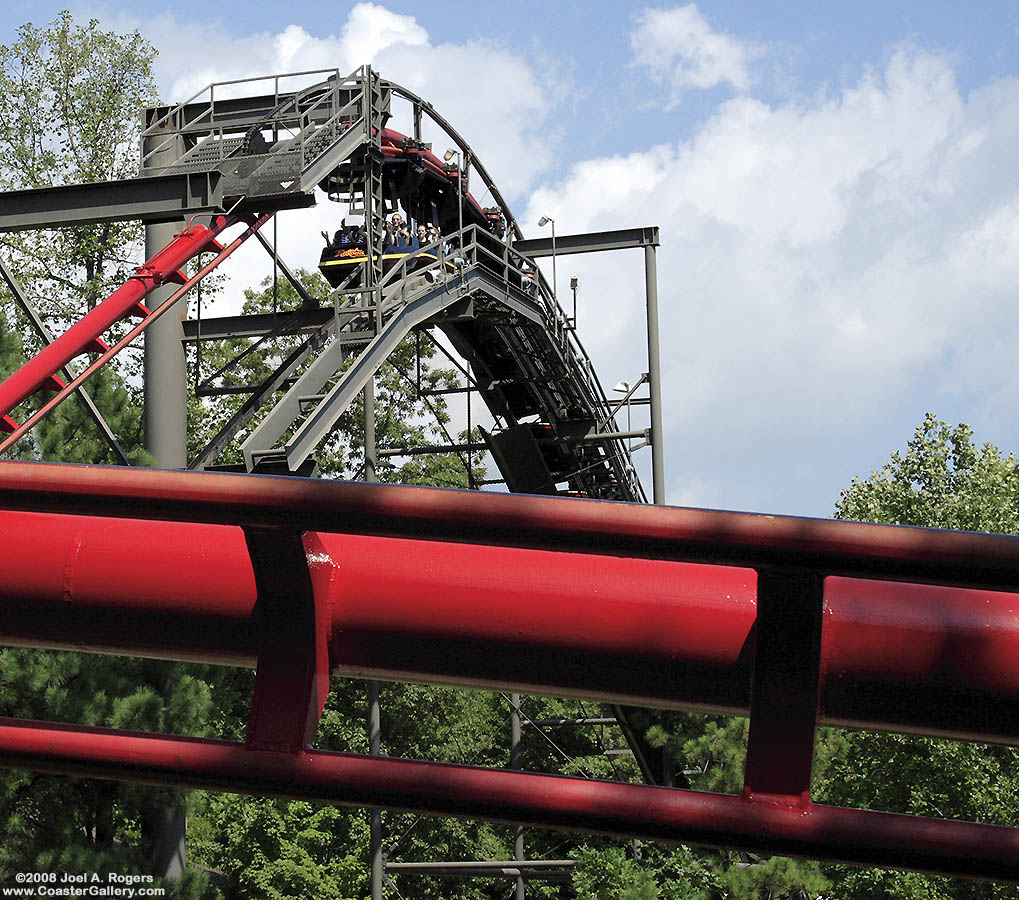
Gazing up at this ferocious family coaster, you might’ve been among the generations of riders who called the Big Bad Wolf their first “big” coaster; those who recognize it as the ride that would kick start a quarter-century of thrill seekers before disappearing at the height of its popularity. This spectacular, suspended swinging coaster helped redefine what a family coaster could be, thrilling young and old as it raced through the woods of Virginia “at the speed of fright.” And today, its legend lived on…
And before we head off, remember that you can unlock rare concept art and audio streams in this story, access over 100 Extra Features, and recieve an annual Membership card and postcard art set in the mail by supporting this clickbait-free, in-depth, ad-free theme park storytelling site for as little as $2 / month! Become a Park Lore Member to join the story! Until then, let’s start at the beginning…
The Old Country
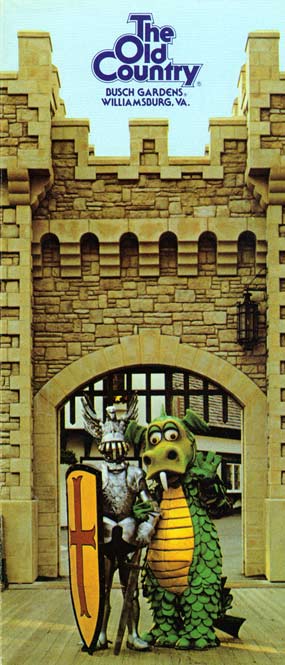
You might imagine that the tale of the Big Bad Wolf begins with three little pigs or a little girl in a red hooded cloak, but in this Big Bad Wolf’s story, it begins in the shadow of a brewery. Somewhat anachronistically wedged into the “Historic Triangle” of Virginia’s three colonial settlements (Jamestown, Williamsburg, and Yorktown), the Anheuser-Busch brewery opened in 1972. However, it wasn’t alone for long. Following a blueprint being laid out at its brewery in Tampa, Florida, Anheuser-Busch’s plan for the region always included a resort and a purpose-built gardens and theme park on the property. Given that Florida’s theme park (which was gated off as a theme park proper in 1970) had leveraged its collection of exotic animals into an exotic African theme, it only made sense that the from-scratch Virginia park ought to have a unifying theme, too: Europe.
While a European setting may seem an odd choice for a park comfortably embedded into the Historic Triangle where American society was born, think about it: casting the 1975 park as “The Old Country” was meant to serve as a complement to the earnest 18th century history and patriotism of Colonial Williamsburg; a paired cultural destination celebrating the origins of colonial immigrants and the traditions, foods, histories, and legends they brought with them…
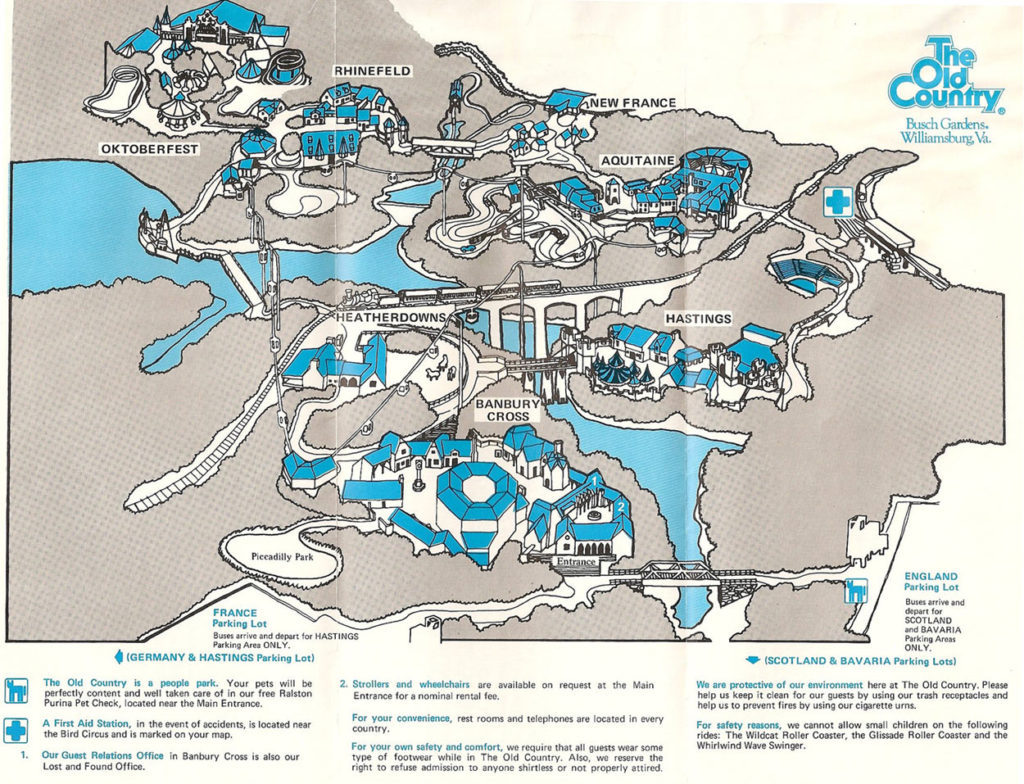
Busch Gardens Williamsburg opened in 1975 as Busch Gardens: The Old Country. From the start, the Virginia park was truly a themed park, made up of elegant “hamlets” representing storybook-style villages plucked from around Europe: originally, England, Scotland, France, New France (that’s Canada), and Germany. Fittingly, the focus was on food, entertainment, architecture, gifts, and culture. Warm, thoughtful, and stylized, these lands would benefit from the park’s placement among the densely forested hillsides of Virginia, set into naturally rolling terrain of Virginia with bridges, waterfalls, rivers, and gardens galore.
In many ways, it was shortly after the park opened that one ride paved the way for the park we know today…
Legends
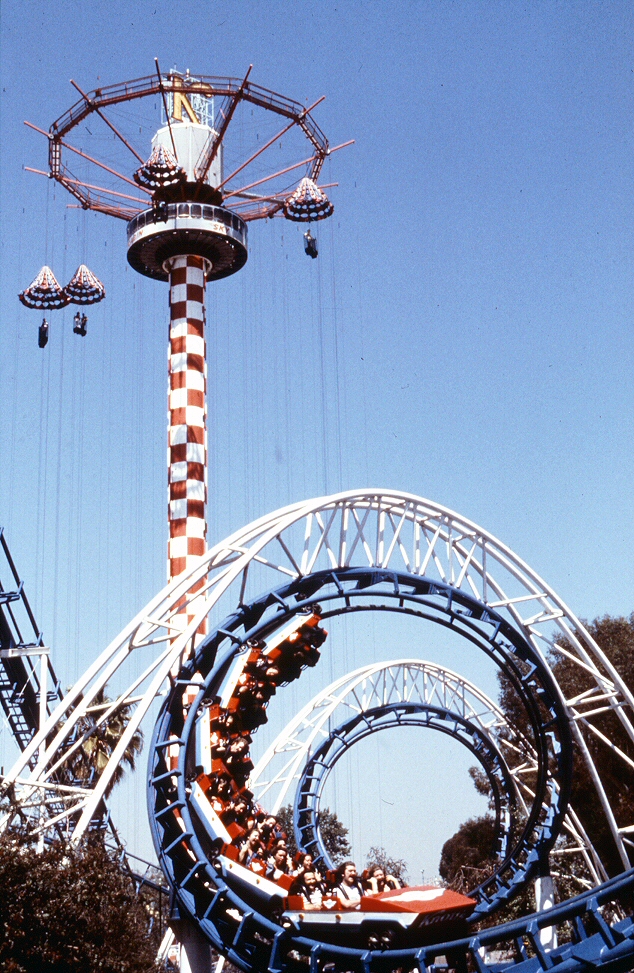
In 1975 – coincidentally, the very same year Busch Gardens Williamsburg opened – the fate of the thrill ride was changed forever. That summer, Knott’s Berry Farm in Buena Park, California unveiled Corkscrew. Designed and built by Californian ride manufacturer Arrow Development (who’d literally invented the steel coaster just fifteen years earlier and a few miles away with Disneyland’s Matterhorn Bobsleds), Corkscrew did the unthinkable: it turned riders head over heels. In fact, Corkscrew wasn’t just the first modern coaster with an inversion; it managed to flip riders twice in two consecutive, elongated manuevers that gave that ride its name.
Suffice it to say: Corkscrew wasn’t just a hit; it was a sensation. Overnight, Arrow became the go-to name in then-modern coaster industry. To this day, Arrow coasters are considered classics at each of the parks they inhabit, be it in the form of the simple looping and corkscrewing creations of the ’70s, the ultra-intense multi-loopers of the ’80s, or the family mine trains of the ’90s. But arguably, those original, spiraling corkscrews remain among Arrow’s most iconic. No less than twelve identical copies of Knott’s Berry Farm’s Corkscrew came online between 1975 and 1979 alone – two per year!
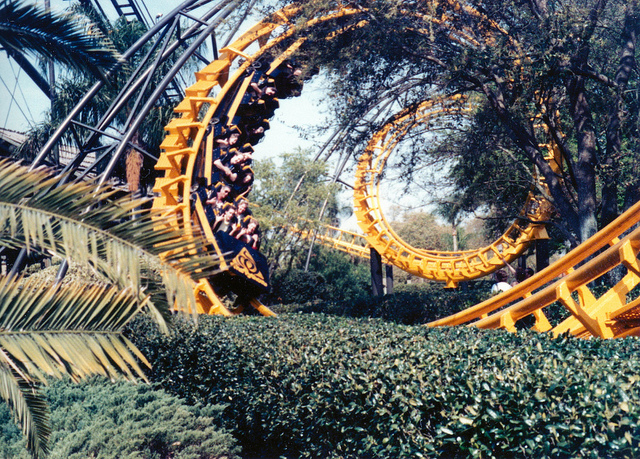
As it happens, one of those clones happened to fall to the Anheuser-Busch family. In 1976, the Tampa Bay park (then problematically named Busch Gardens: The Dark Continent) debuted Python – a slithering, serpentine, sleek copy of Corkscrew perfectly at home in its tropical setting. The first coaster at Busch Gardens in Tampa, Python was just the hit Anheuser-Busch expected. So it’s no surprise that a European counterpart was quickly greenlit for Virginia.
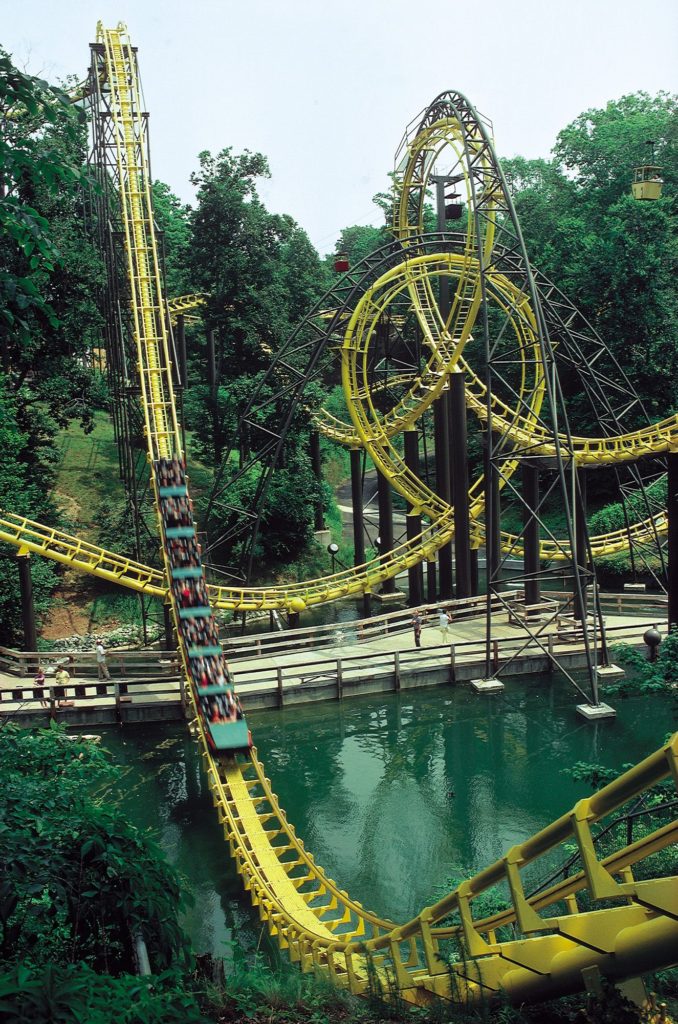
Though not the first roller coaster in Williamsburg, 1978’s Loch Ness Monster was certainly the park’s first signature thrill ride. Rather than a direct clone of Corkscrew, the Arrow classic opted not for corkscrews, but for the world’s first interlocking loops. While it was a bare steel coaster in the midst of an otherwise historic park, Loch Ness Monster captured the imagination of a generation. It was quite literally a legend brought to life, diving along forested ravines, dipping along the Rhine River, and twisting through hidden caves.
Loch Ness Monster was a success. But more importantly, it established a winning formula for Busch Gardens in Williamsburg. The park would retain its charming hamlets; its focus on culture, food, and entertainment; but now, it would use thrill rides to bring the legends of “The Old Country” to life…
In 1980, the pendulum of expansion swung back to Tampa, which opened Scorpion – a classic coaster from manufacturer Schwarzkopf (whose rides – increasingly rare today – are known for their circular loops, rather than the clothoid or teardrop-shaped loops in Arrow’s designs and modern engineering). Given the pattern started by Python and Loch Ness Monster, you might’ve expected the Virginia park to open a Schwarzkopf coaster soon after… and as the story goes, that was the plan…
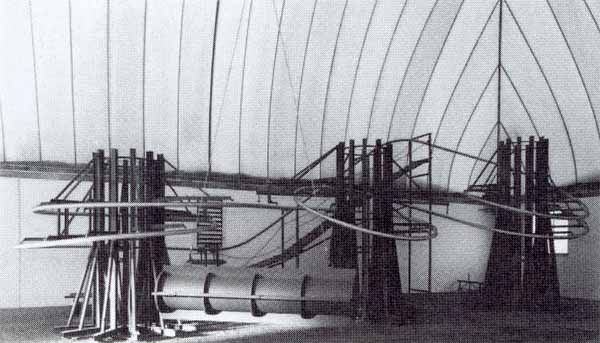
In fact, the German manufacturer Schwartzopf was reportedly hard at work as far back as the mid-1970s developing what they hoped would be a landmark new style of roller coaster. Spiraling and gliding around massive support towers, this entirely new genre of coaster would certainly take the world by storm…
A peek at the Passholder-exclusive patent below reveals just what would’ve made this “flying” coaster so unique… and the uncanny resemblance it bears to the Big Bad Wolf…
Reportedly, their groundbreaking “flying” coaster was intended to debut at the real Oktoberfest in Germany, with a permanent installation in Busch Gardens’ German-themed Oktoberfest land simultaneously… It’s believed that Schwarzkopf had even poured concrete footings and installed initial supports for a full-sized mock-up prototype of the ride system at their testing grounds in Germany.
However, when Schwarzkopf filed for bankruptcy in 1980, any trace of the under-construction prototype was (literally) scrapped, as was any hope for the cutting edge ride system to make its debut in Virginia. The concept, however, lived on…
Swinging
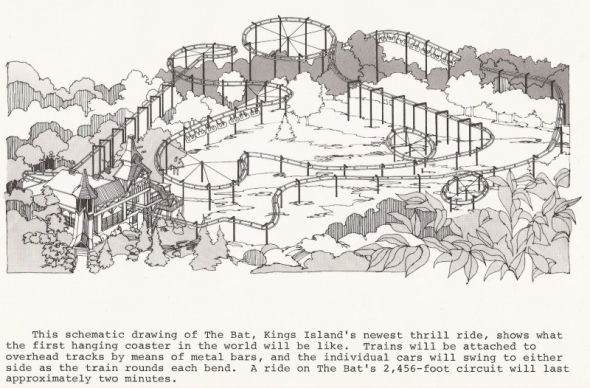
For just a moment, let’s leave behind the dense forests of Virginia and fly to the Midwest, right along the Ohio River. In 1980, Kings Island near Cincinnati was working closely with Arrow, too. Still riding the wave of success its Corkscrew model had brought, Arrow would have years left of designing corkscrewing and looping classics. But Arrow had a wildly exciting concept they’d been hoping to get off the ground, and only a large, modern thrill park like Kings Island could build the full-scale operational prototype they needed…
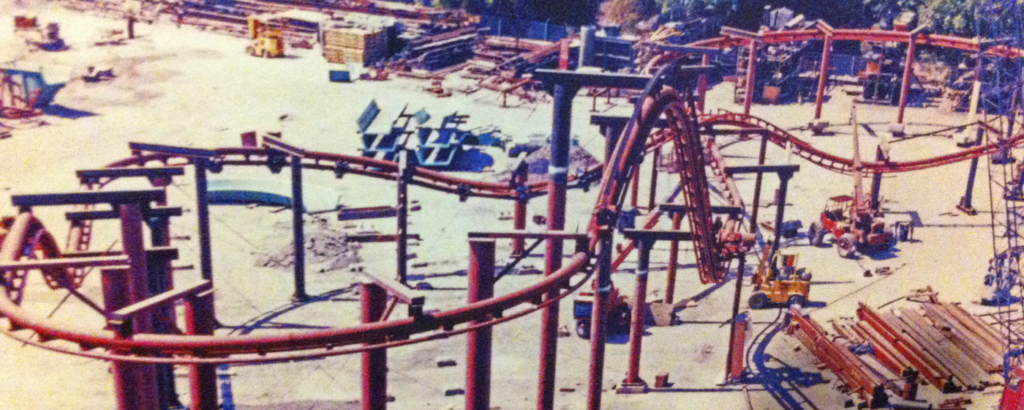
The new coaster model, which they called a “suspended coaster,” would look quite a bit different from everything that came before. For one thing, as its name implied, the roller coaster cars would hang down from the track above. But most incredibly, those suspended cars would be hanging from jointed arms, able to sway side-to-side at each bend in the track, banking and swaying along the ride’s course.
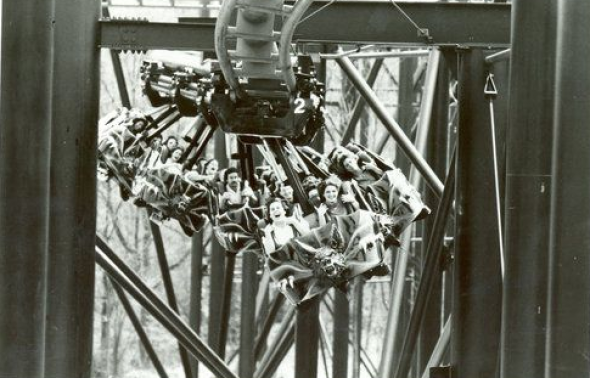
The idea was phenomenal and groundbreaking. The prototype at Kings Island? Not so much. The Bat roller coaster opened in 1981 and by 1984, it was gone. Coaster aficianados would do well to explore the surprisingly frank, in-depth history of The Bat written by John Keeter on Kings Island’s own official blog, but the long and short is that The Bat (like many Arrow coasters) was built in an era before computer simulations could precisely anticipate the force and stress on each square inch of track.
As a result, the track of The Bat was insufficiently banked around turns and twists (see also, the Declassified Disaster: Disneyland’s Rocket Rods), which applied tremendous stress to each swinging cab’s shock absorbers, necessitating daily replacements. The novel engineering feat of hanging cars beneath track also caused substantial difficulties with the ride’s chain lift system as well as its braking system, where fins could become lodged or bent in the pinching brakes due to the trains’ unpredictable angle of swing on entry.
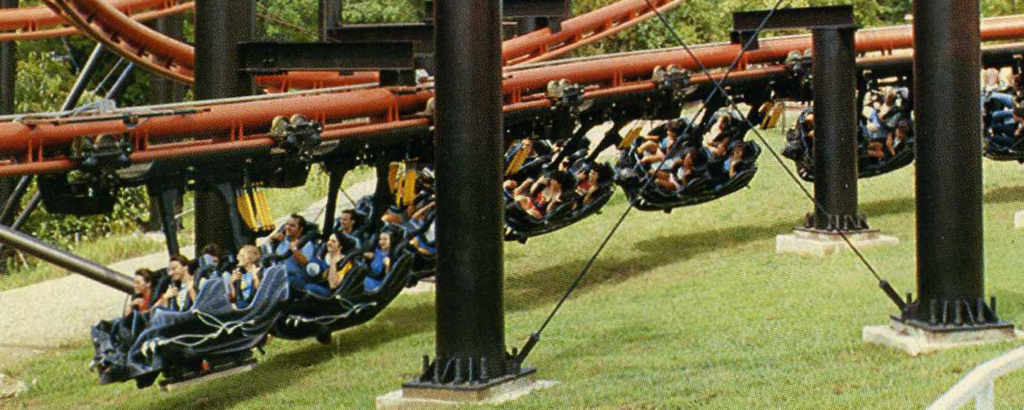
The inherent issues in The Bat forced Kings Island’s hand and the ride closed permanently after just a few years. (Arrow did return to the same plot of land in 1987 to build a much different roller coaster, the multi-looping Vortex, which re-used the Bat’s Victorian belltower station and famously left suspended-track station cut-outs and concrete footings in tact).
As it happens, The Bat wouldn’t be the last ultra-innovative but disastrously-failed prototype to call Kings Island home… both of the Lost Legends: Son of Beast (the world’s tallest, fastest, and only looping wooden roller coaster) and TOMB RAIDER: The Ride (one of the best themed thrill rides ever, much less at a seasonal park in Ohio) would become $20 million busts in the New Millennium, making The Bat look like a minor mistake.
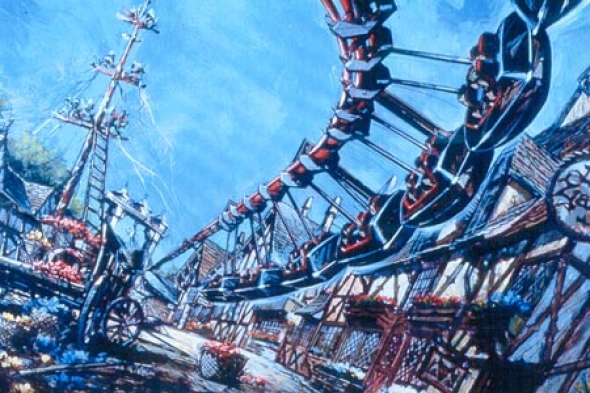
But the failure of The Bat didn’t stop Arrow or its quest to perfect the suspended coaster… Quite the opposite, engineers quickly returned to the drawing board. And given that plans for a similarly suspended coaster at Busch Gardens Williamsburg had been foiled by Schwarzkopf’s failed design, Arrow had just the place to prove themselves…



